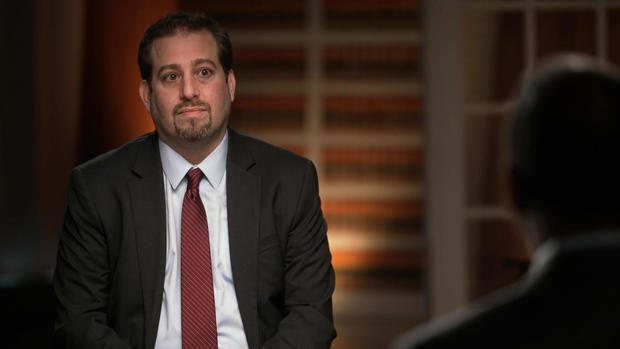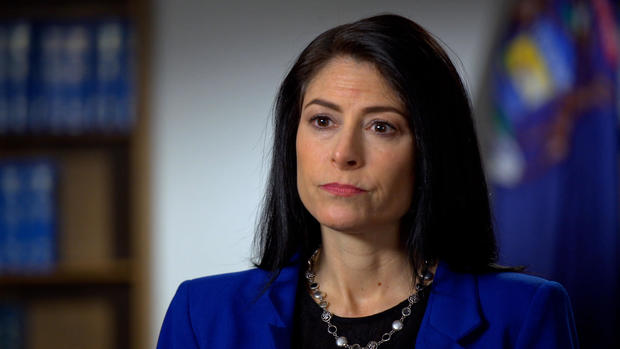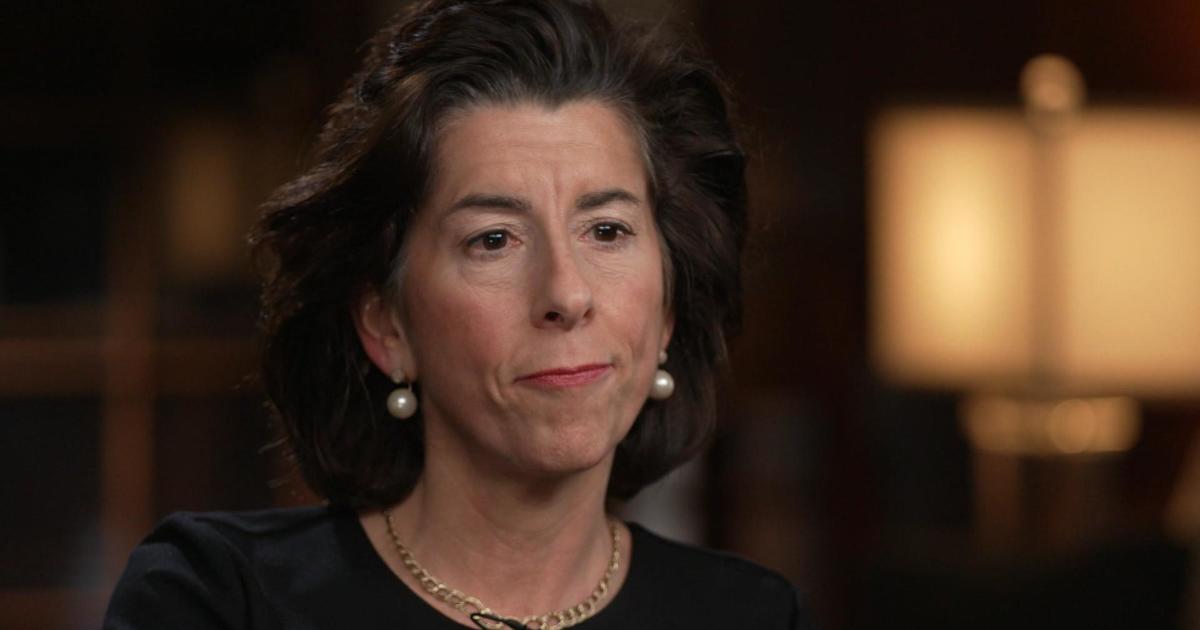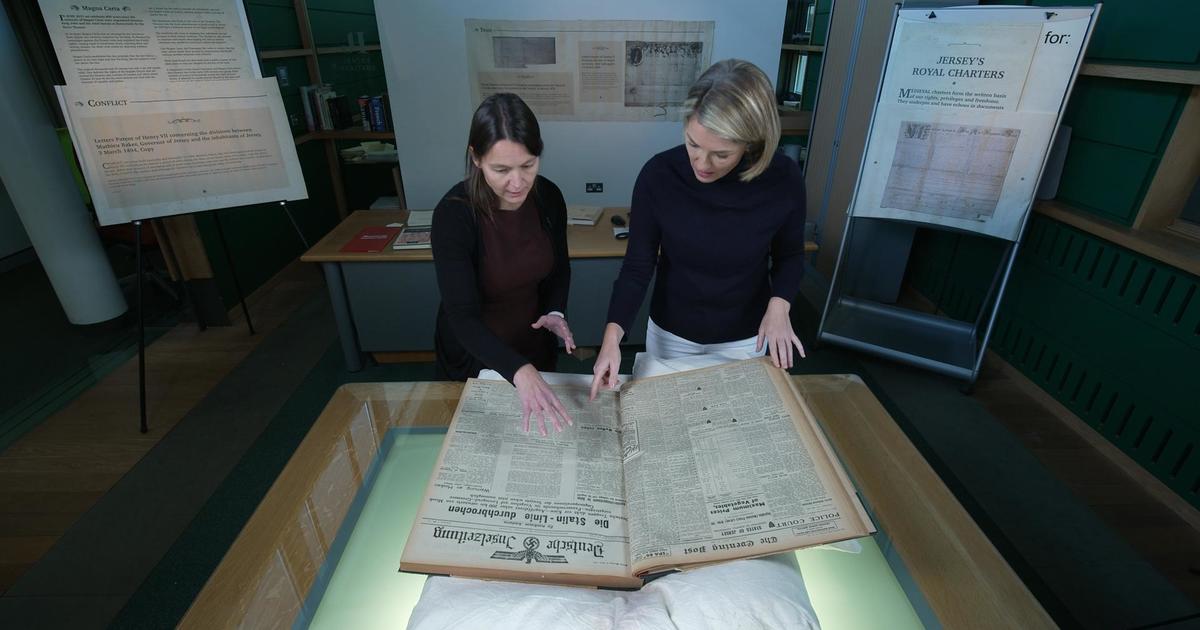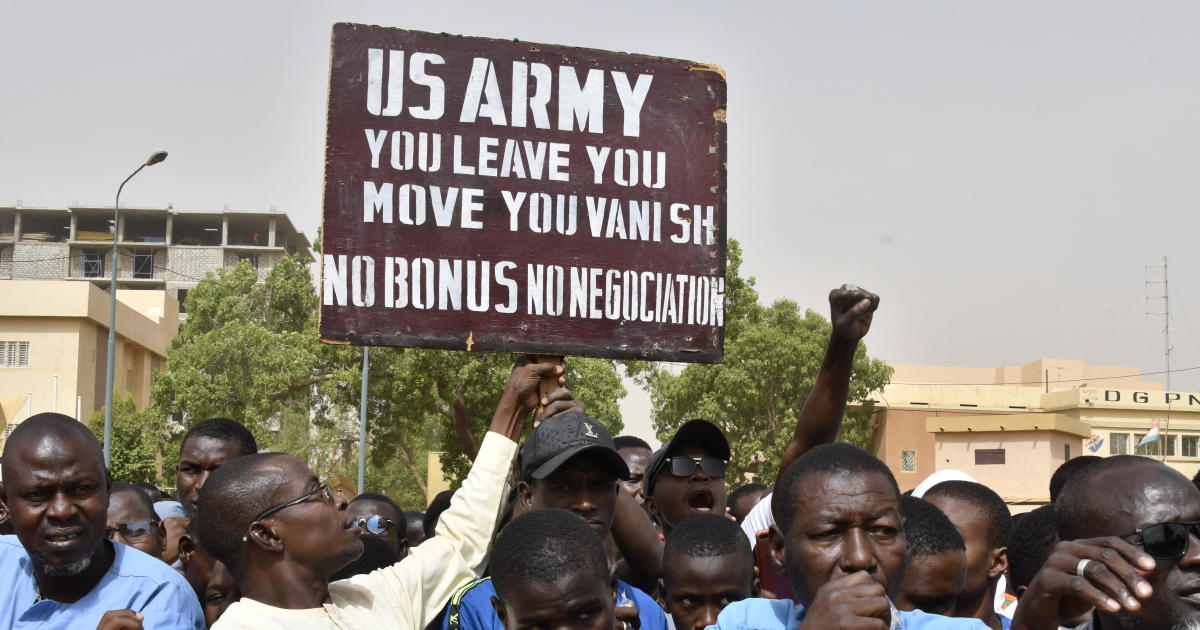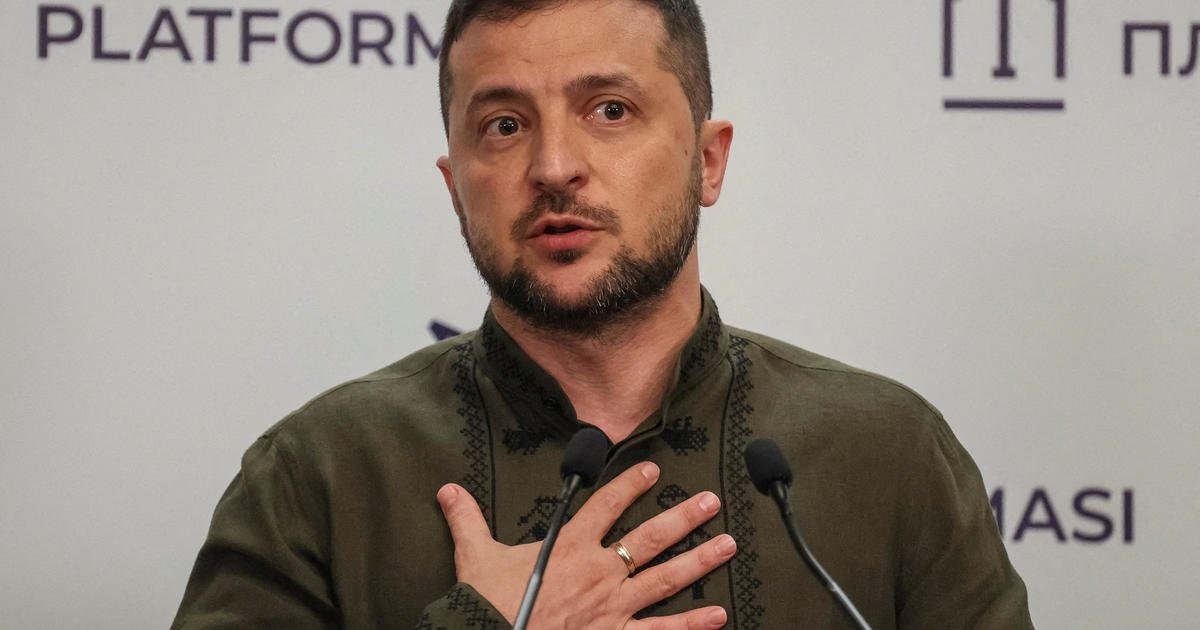How did rioters breach the U.S. Capitol on January 6?
The FBI has spent much of the weekend identifying and hunting down more than 300 suspects from the attack on the United States Capitol on January 6th. Whipped into a seditious frenzy at a rally behind the White House, thousands of pro-Trump demonstrators marched on the Capitol to stop the electoral vote count presided over by Vice President Mike Pence. Trump true-believers, Proud Boys and Boogaloo Bois joined costumed QAnon conspiracists. There were neo-Nazis and other white supremacists. Some were armed or wearing tactical gear or capes improvised from Trump flags. What was once the fringe had become a threat to American democracy.
Steven Sund: They came with body armor, they came with helmets, they came with respirators. They came with baseball bats, they came with pipes. They came with bear spray. They came with their own explosives. They came with climbing gear. They came well-prepared and coordinated. This was no less than a coordinated, violent attack on the United States Capitol.
On January 6th, Steven Sund was chief of the Capitol Police. He'd held the post a year and a half, but he'd spent almost 30 years in law enforcement in the nation's capital. He'd seen massive, sometimes violent protests before and from the intel he says he'd received, Sund was confident his plan for deploying his officers was robust enough to handle the pro-Trump demonstration. It was a tragic miscalculation. When insurgents filled the Capitol's grand halls with rage and rancor, Chief Sund was scrambling to mount a response from his command center two blocks away, watching the defilement of the "People's House" on security cameras.
Bill Whitaker: You offered your resignation in the wake of this.
Steven Sund: Yes sir.
Bill Whitaker: Why?
Steven Sund: I understand how things work. I'm the chief the visuals of what I watched were-- were alarming.
Five people died as a result of the siege, including Capitol police officer Brian Sicknick. The next day, House Speaker Nancy Pelosi said she'd lost confidence in the chief.
Speaker Nancy Pelosi day after Capitol assault: I am calling for the resignation of the Chief of the Capitol Police, Mr. Sund.
His two superiors, the sergeants at arms of the House and the Senate, resigned as well.
Steven Sund: She had gone onto national TV and basically made everybody feel that it was a failure on my part. If that's how the leadership feels, then I have no problem. Then I will step down to let this department move forward.
Bill Whitaker: You said that you let your officers down.
Steven Sund: No leader wants to see their officers go through what they went through. You know it's heartbreaking to see that.
Three days before the siege, an internal report by Sund's own intelligence unit, obtained by the Washington Post and confirmed by 60 Minutes, warned the rally of angry Trump supporters, white supremacists and militia members January 6th could erupt in violence, their rage focused on Congress.
Steven Sund: We were expecting-- some large crowds are gonna come down. Their grievance would be on the Capitol and the counting of the votes. We expected altercations between some of the counter protests. We may have some people within the group that may be armed. We had contingency planning for that. But nothing about an armed, violent attack on the United States Capitol Building.
Bill Whitaker: But I'm sitting in New York, and I was aware that this was likely to be-- a day of violence.
Steven Sund: We expected demonstrators with some pa-- potential for violence. Not a directed, coordinated violent attack toward the nation's Capitol. Make-- I consider those two different things.
He told us he thought he had everything under control. But he was concerned enough to get additional helmets for his officers and widen the perimeters. He asked the sergeants at arms to activate the National Guard but they wouldn't approve a formal request... A decision he told us he came to regret before President Trump finished speaking to his throng of supporters.
Steven Sund: We had-- a coupla pipe bombs. We had a vehicle with some explosives and a weapon in it.
Bill Whitaker: How far away from the Capitol were these bombs?
Steven Sund: Just a couple blocks. And I believe those were purposely done to draw resources away from our perimeter.
Sund told us while some officers were diverted by the bombs, the seditious mob stormed the bike rack barricades on the west side of the Capitol.
Bill Whitaker: Describe that scene for me when-- when the mob first got to the-- the perimeter.
Steven Sund: They tore apart, immediately tore apart the bike rack, literally started throwing it at the officers' heads. Dozens of officers were-- were fighting-- with them, the officers were being hit with pipes-- bats, batons-- you name it.
Bill Whitaker: It's almost like you're describing a military operation.
Steven Sund: It was well-coordinated.
Chief Sund made an urgent call for help to the D.C. Metro Police. About a hundred officers responded immediately.
Bill Whitaker: Right there at the archway entrance to the Capitol there was a pitched battle.
Steven Sund: There was a pitched battle that went on for hours. For hours - that you know, both - Capitol Police, Metropolitan Police defended that door with everything they got.
With the mob battering the door, Sund called on the National Guard. He says it took him a half hour to make his way up the chain of command to the office of the secretary of the Army, which controls the D.C. National Guard.
Steven Sund: I was pleading, absolutely pleading for National Guard assistance as quickly as possible with the-- with the secretary of Army's representative, telling him, "I need boots on the ground now." He kept saying, quote, "I don't like the optics of National Guard standing in line with the Capitol Building behind them.
Bill Whitaker: And this is while the siege is underway?
Steven Sund: This is while the siege is underway.
Bill Whitaker: What's going through your head?
Steven Sund: I'm begging, literally begging for support for my men and women, and that's what I'm hearing.
The Army told us there was no discussion of optics. But the chief of the D.C. Metro Police, who was also on the call, confirmed to us Sund's account. It took another three hours and 15 minutes to mobilize and deploy the National Guard. It was 8:00 p.m. when combined forces of police and National Guard cleared the Capitol, making it safe for lawmakers to return to the floor to certify the election of Joe Biden and Kamala Harris as the next president and vice president of the United States.
Steven Sund: We had 60 law enforcement officers injured, 15 went to the hospital. Capitol Police lost two of their officers that week. They did not fail in their mission. They need someone to really stand up and-- and let the American people know, they didn't fail.
Bill Whitaker: It's hard to understand how you can describe what we all saw as successful.
Steven Sund: I know it didn't look pretty, but the number one goal is to protect the members of Congress. They protected the members of Congress, and they need to be recognized for that.
Officer Eugene Goodman led the mob away from a corridor where Vice President Mike Pence had been hustled to safety by his security detail just moments before. Since the siege on the Capitol, federal and state law enforcement have made arrests every day. Because cell phones were so ubiquitous, authorities have a cache of digital evidence, about 140,000 pictures and videos so far. Many of the people who rampaged through the Capitol revealed themselves, posting their actions on social media. Now facing federal criminal charges: Kevin Seefried, the man with the Confederate flag. Adam Johnson, who walked off with Nancy Pelosi's lectern. The man with his boot on a desk in the speaker's office, Richard Barnett. This past week the acting U.S. attorney for the District of Columbia said expect more arrests and charges tied to sedition and conspiracy in the days ahead.
Oren Segal: What we saw on January 6th in D.C., in some ways, may have been the most predictable terrorist incident in modern American history.
Oren Segal runs the Center on Extremism for the Anti-Defamation League. He and a team of researchers scour the web, monitoring hate groups and sharing what they find with law enforcement. Segal told us he was raising the alarm to federal, state and local authorities for months before the siege on the Capitol. But he's been watching violent extremism grow for years, built on grievances and a sense of loss.
Oren Segal: For white supremacists, they believe that their culture, their race is being taken away, that they're gonna go extinct. Immigrants are coming in, the browning of America. For militias, it's often that their guns are gonna be taken away. And conspiracy theories, like QAnon the government is trying to take away their freedom. So here we have all those factors coming together. And now they're telling you your election is being stolen, is it a surprise that people reacted the way that they did?
Bill Whitaker: You called this-- a terrorist incident. Not a protest, not a riot. But a terrorist incident.
Oren Segal: One of the lasting impressions of what we saw at the Capitol was not some white supremacists, some militias dressed up in their gear, but it was John Q. Citizen who got wrapped up in that.
Bill Whitaker: Is that more frightening or less?
Oren Segal: To me, the idea that people who are not necessarily card-carrying members of any extremist movement would get wrapped up in extremist activities is more frightening.
Oren Segal says extremism has been growing in plain sight on social media like Facebook and Twitter. Now that those platforms are curtailing hate groups, extremists have retreated to distant corners of the internet.
Oren Segal: These people are still out there. Their grievances are still real to them. They have a narrative that is wrapped up in a bow for the next four years. The belief in an illegitimate government that was stolen from its rightful leader, Donald Trump. And if they perceive it to be stolen, and they hear people who animate those thoughts and support it, then they're emboldened. And when you have extremists who are emboldened over a period of time, you end up with mass shootings in El Paso and Pittsburgh and Poway. You end up with people storming capitals in Michigan. And you end up with January 6th.
This past week the FBI sent warnings to local law enforcement across the country that extremists, conspiracists and hate groups plan armed protests in all 50 state capitals in the days before the inauguration and threaten violence if President Trump is removed from office. To Democrat Dana Nessel, Michigan's attorney general, it's like a recurring nightmare.
Bill Whitaker: When you saw the siege on the Capitol unfold on the 6th, wh-- what-- what did you think?
Dana Nessel: Of course, I was horrified but there was a part of me that wasn't actually surprised because I've seen the threats of domestic terrorism in our own state.
When Governor Gretchen Whitmer, also a Democrat, shut down the state to fight the spread of the coronavirus, President Trump tweeted, "liberate Michigan" and militia members armed with assault weapons occupied the Capitol in Lansing. Several months later, 14 militiamen, at least five of whom had occupied the Capitol, were charged in connection with a plot to kidnap Governor Whitmer.
Dana Nessel: A lotta these same individuals saw what happened in Lansing, Michigan last April and decided that they might be able to do the exact same thing in Washington, D.C. And it turns out they were right.
Michigan is taking the FBI warning seriously. Attorney General Nessel urged state lawmakers to cancel their session this week. They did.
Bill Whitaker: It's that serious?
Dana Nessel: I have recommended to the legislators that I know that they go to-- you know, an Army store and purchase-- Kevlar vests, purchase helmets, perhaps gas masks. And these are the kinds of items now that our state legislators are having to purchase just to provide some sense of security to themselves-- so they can feel at least a little bit safer while they're in session.
If Lansing, Michigan, and Washington D.C. have shown us anything it's that we're in a battle for the soul of America and it requires each of us to answer one basic question: who are we?
Produced by Marc Lieberman, Pat Milton and Sam Hornblower. Edited by Craig Crawford.


